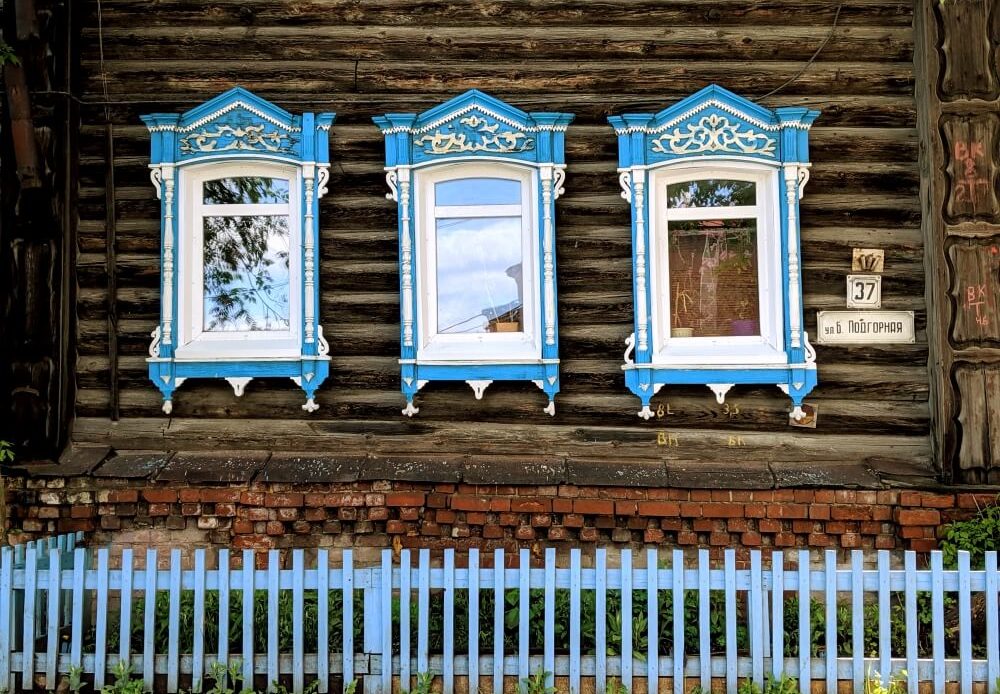
Tomsk was the last part of my itinerary to fall into place. In fact, it was one of the destinations which I kept taking out and putting back in; I just wasn’t sure if the city was worth the trip.
And it seems I’m not alone – as I was originally writing this from the comfort of my sleeper train, a girl based in Moscow just asked via my Instagram stories whether Tomsk was worth adding to her Trans-Siberian itinerary. So is Tomsk worth going to? Keep reading to find out…
The Tomsk conundrum: getting to Tomsk
So what makes Tomsk so problematic? The city doesn’t actually lie on the Trans-Siberian railway.
Despite being the first Russian city in Siberia and the region’s first ‘capital’ (and thus a large trading centre), Tomsk was bypassed by the railroad as it was constructed in the early 20th century, supposedly due to swampy marshlands near the city. Instead, the route was built further south through a settlement which became Novosibirsk, today Russia’s third largest city.
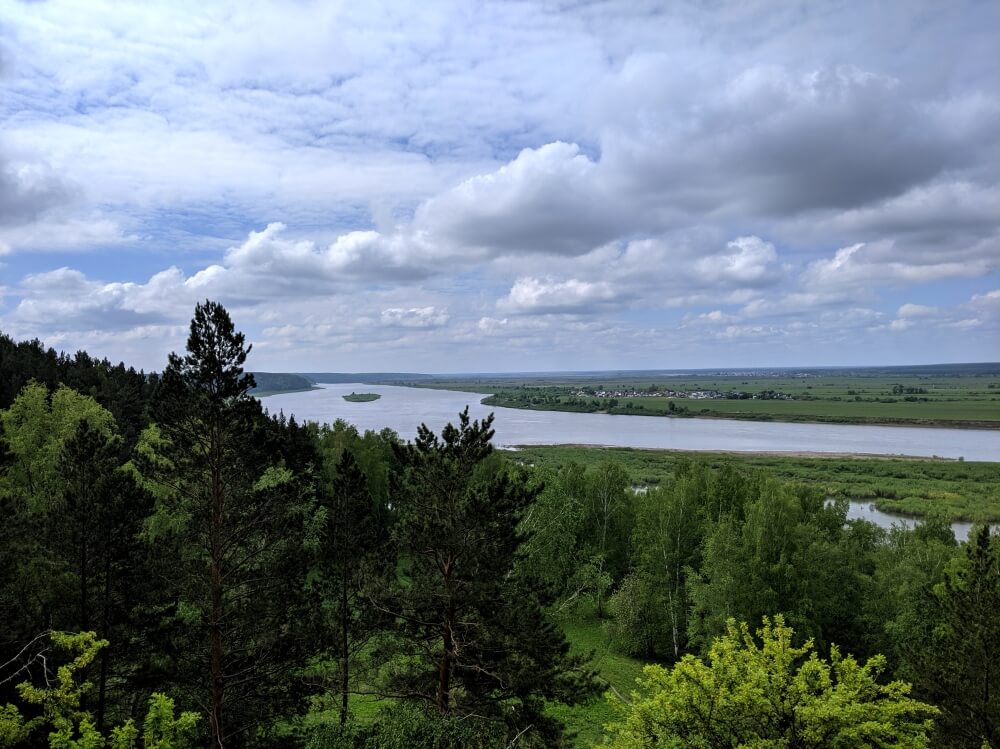
View of the Tom river
That means Tomsk requires a bit of extra effort (and planning) to get to: the only direct connections from Krasnoyarsk (heading East) or Yekaterinburg (heading West) run fairly infrequently and are pretty slow. (Like really, really slow.) Of course, that’s not to say it’s impossible – if you have the time; direct trains and buses run regularly from Novosibirsk (around four hours away).
Therefore, unless you’re making a stopover in Novosibirsk (or fancy a four-hour stopover in the village of Tayga at 4am), whether you make it to Tomsk might depend more on your timetable than your bucket list. Which makes it all the most pressing to ask the question: is Tomsk worth visiting on your Trans-Siberian trip?
Read more: my Trans-Siberian itinerary in full
Tomsk: first impressions
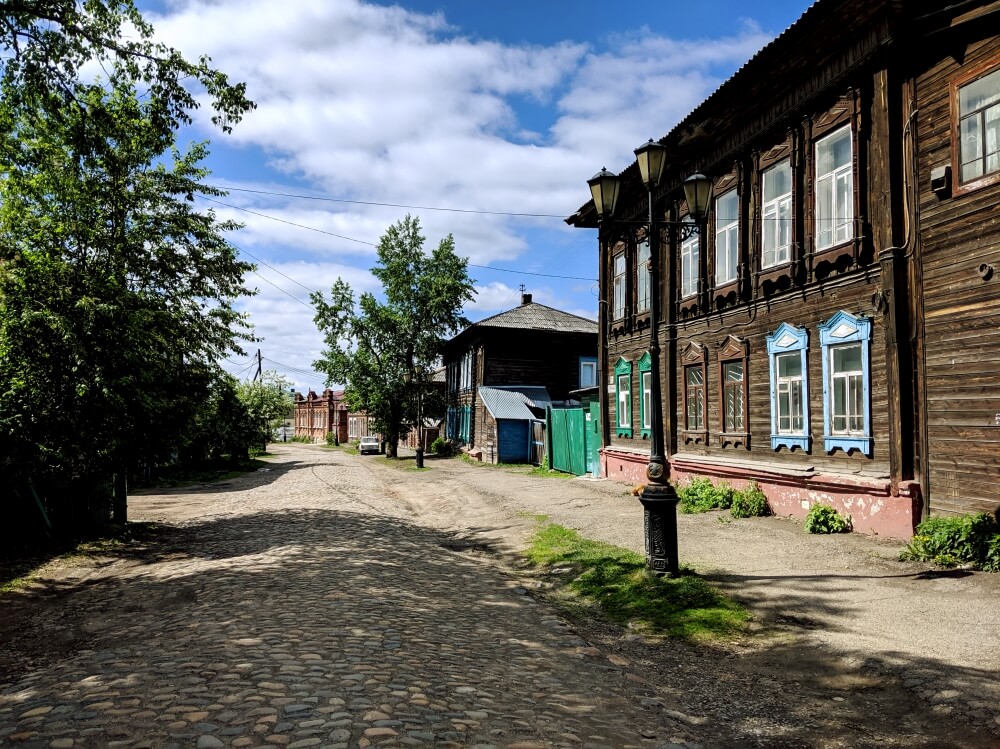
One of Tomsk’s many pretty, quiet streets
On arriving at Tomsk station at 07.36 from Krasnoyarsk, I jumped in a Yandex taxi to my hostel. The taxi took me – quite literally – around the houses on a fairly circuitous route and my first thought was that I had entered some sort of rural village; all we drove past were wooden cottages on tree-lined lanes. We then drove past a beautiful well-kept Russian church on top of a small hill and by the time we reached the bottom, we were suddenly met by the signs of the city: wide avenues, tall blocks of flats and (obviously) a street named Prospekt Lenina.
This was only about 25 minutes into my 30 hours in Tomsk, but it had turned out to be pretty representative of the city; parts of Tomsk feel like a small, rural village and parts feel like a large, bustling city. And from my experience, these two characteristics were often shown side-by-side – turn down one street and suddenly the buzz of the city is gone and replaced by wooden houses and cobbled roads.
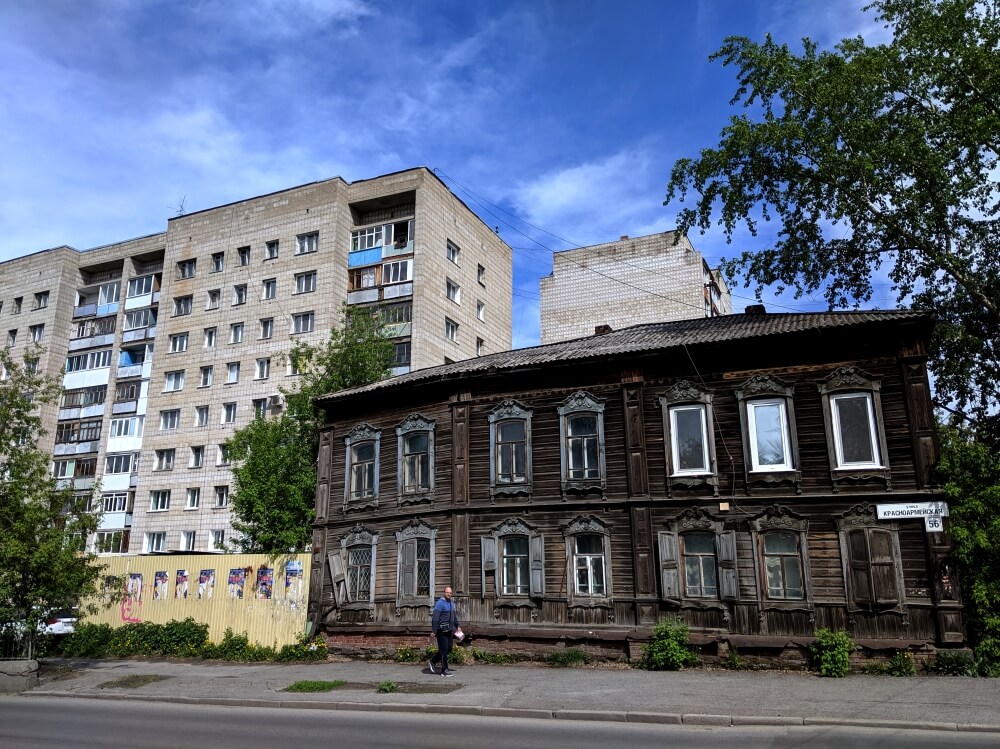
Old and new(er) in Tomsk
I don’t think it’s overreacting to say that this is the result of being bypassed by the Trans-Siberian and therefore getting off ‘lightly’ from the aggressive Soviet industrialisation which befell other cities like Krasnoyarsk and Novosibirsk. Instead, it feels more like Tomsk was allowed to develop more organically, maintaining more authentic and historic elements than many other larger cities. And herein lies most of the appeal.
Tomsk isn’t really the sort of town with a long list of landmarks to tick off.
The main attractions of Tomsk
When I was researching the city, I came across a lot of accounts from people who raved about what a great time they had had there and how much they liked it, but I found very little on things to do in Tomsk. Now I’ve visited, I can confirm: Tomsk isn’t really the sort of town with a long list of landmarks to tick off, I think the appeal lies in the city’s mix of old and new and the relaxed atmosphere.
Having said that, here are the main things to do in Tomsk.
Traditional Siberian architecture
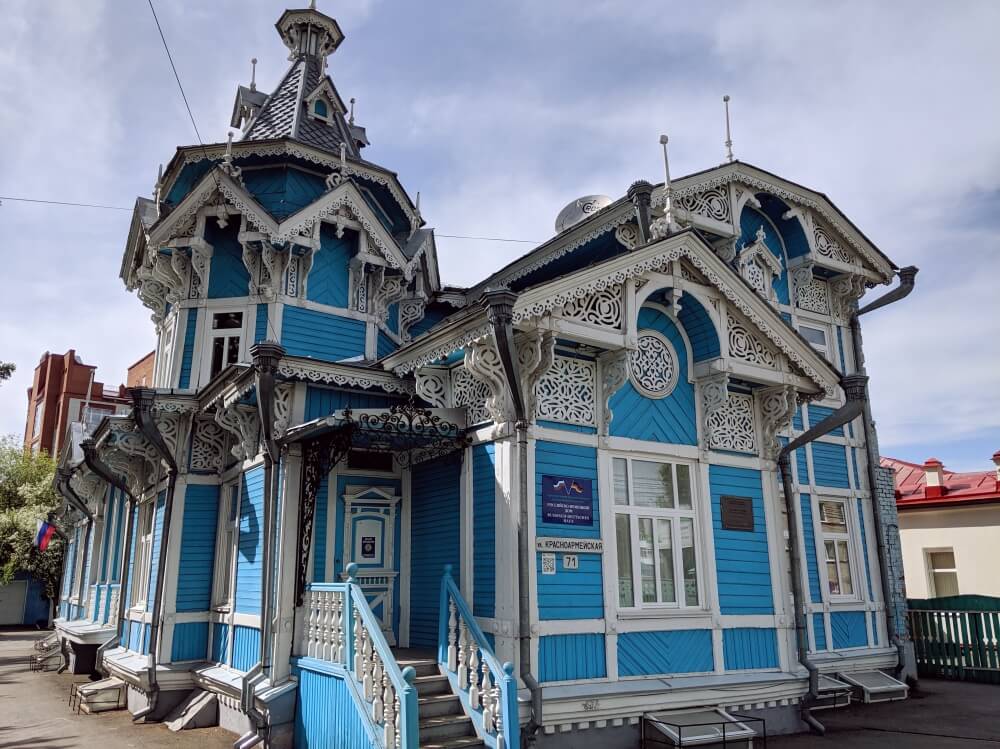
Definitely the star of the show in Tomsk is traditional Siberian lace architecture that is on display. In some cities like Krasnoyarsk, you’ll find a handful of well-preserved buildings, but here in Tomsk, you can expect to find whole streets full. Throughout the whole city you’ll find intricate Siberian lace woodwork and ornately decorated windows, but the largest concentration by far is to be found in the Zaistochye/Tatarskaya Sloboda neighbourhood – specifically along the parallel streets of ul. Tartarskaya and ul. Maksima Gorkovo.
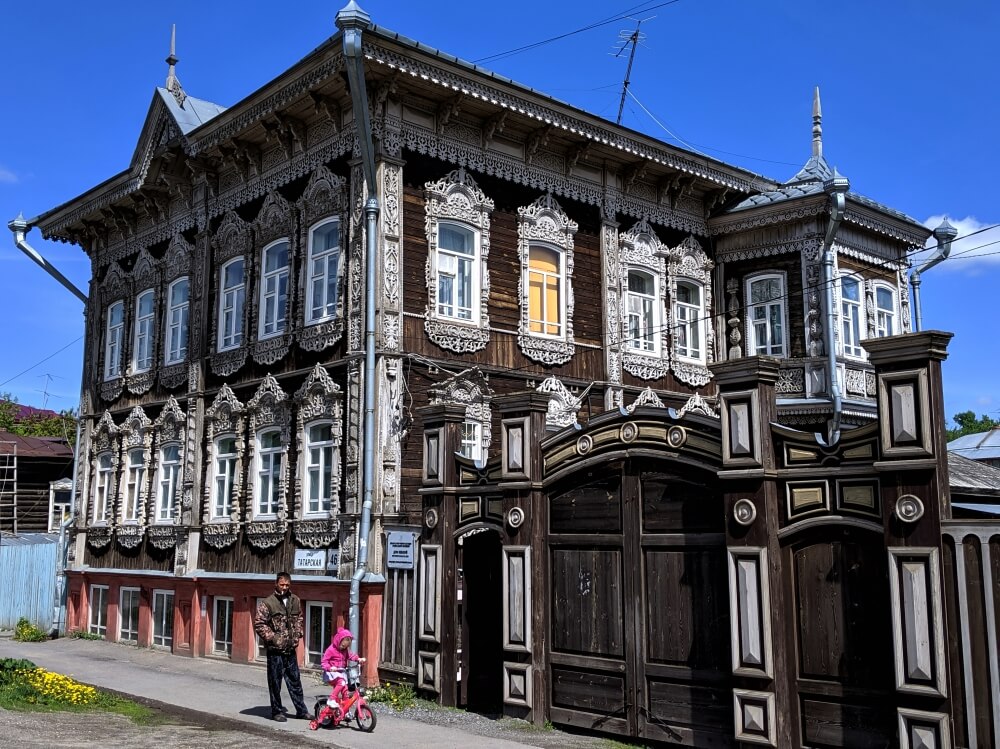
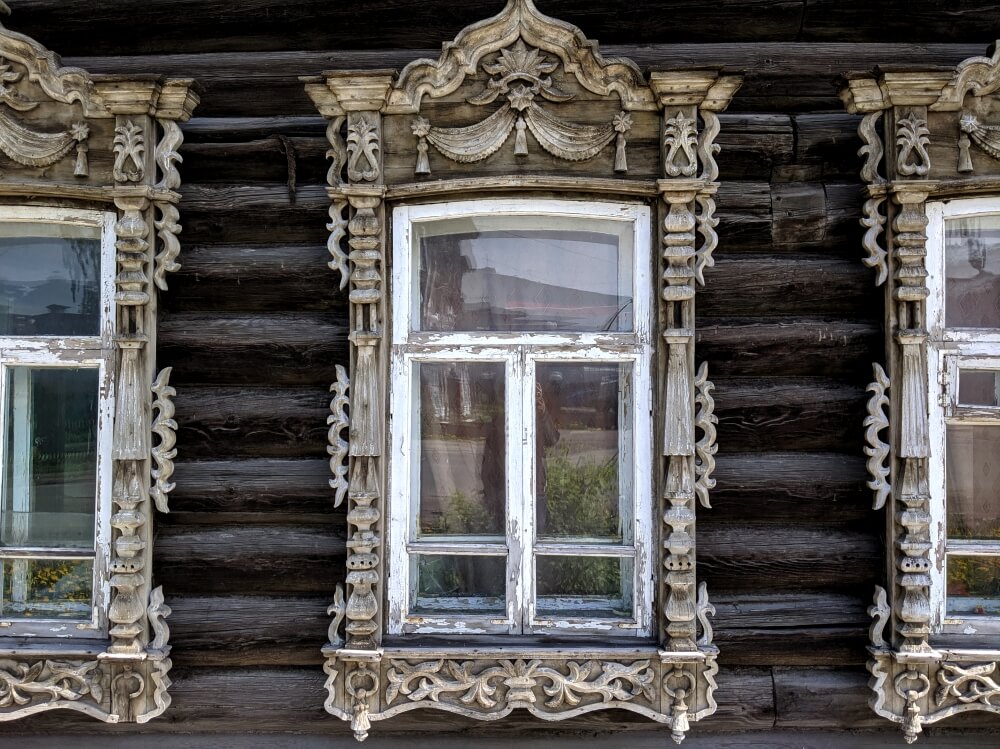
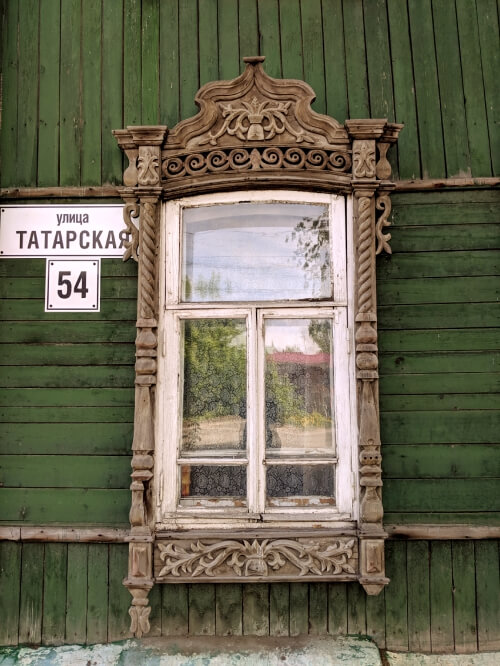
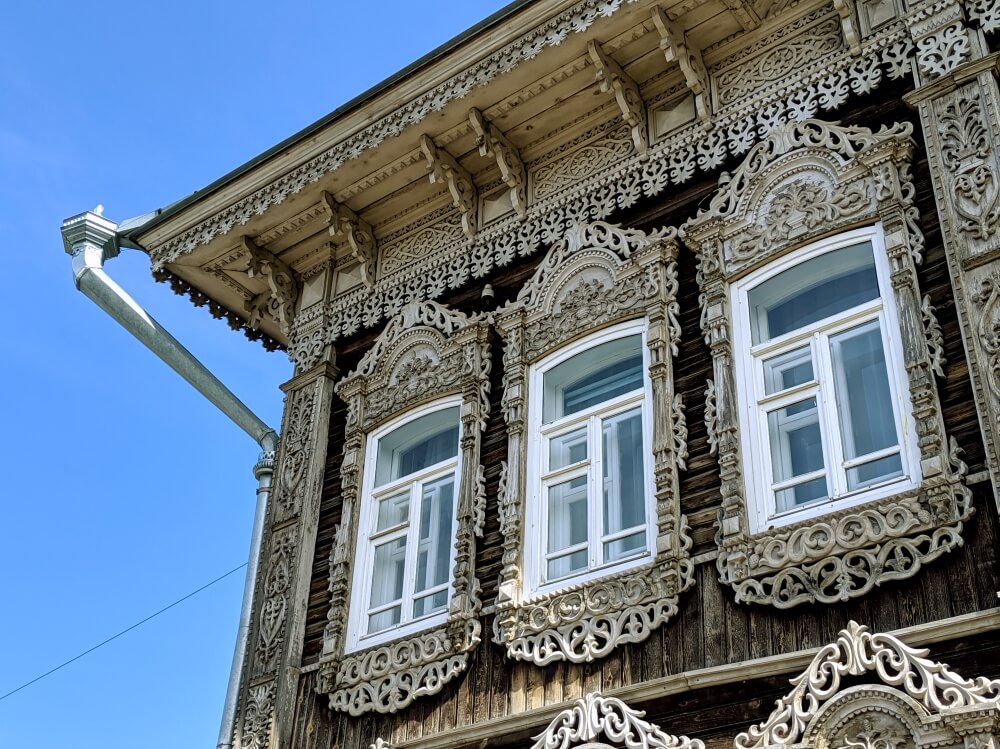
I think I genuinely spent hours photographing these houses – they were all just so intricately designed and in varying degrees of preservation. (Although somehow the slightly more aged houses had the most romantic feel.) Unsurprisingly, the area is one of the oldest in the city, so you’ll find a few signs dotted around that explain a bit about the area and its original population, the Tartars. Mostly though, you’ll just take photos of all the beautiful windows.
Student life
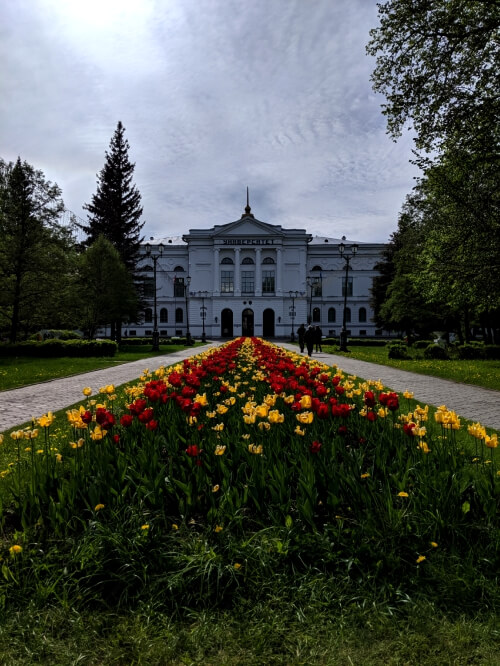
Tomsk also has some beautiful university buildings found around the city. In fact, Tomsk is actually home to six universities and over 100,000 students (meaning almost 1 in 5 residents is a student). The main student area of the city is found around Yuzhnaya, where you can also find a really great outdoor sports area, with some well-marked running routes and some nice walking trails. This area is right on the river and is really peaceful – it’s pretty easy to forget you’re still in the city.
Food & drink in Tomsk

Me being very under-dressed for such a swanky place
For food and drink, Tomsk has all the cafes and bars that you’d expect of a university town. The absolute highlight for me was Kukhterin, a very swanky restaurant in the centre of town where I had one of the biggest and nicest trouts of my life. I was not at all dressed for the occasion.
Also worth checking out is the craft beer bar PRO CRAFT, as well as the chic little cafe Bulanzhe where I had a great breakfast. (I also had some fantastic Sirniki at a nameless Stolovaya in Yuzhnaya, but I couldn’t even begin to work out where that was.)
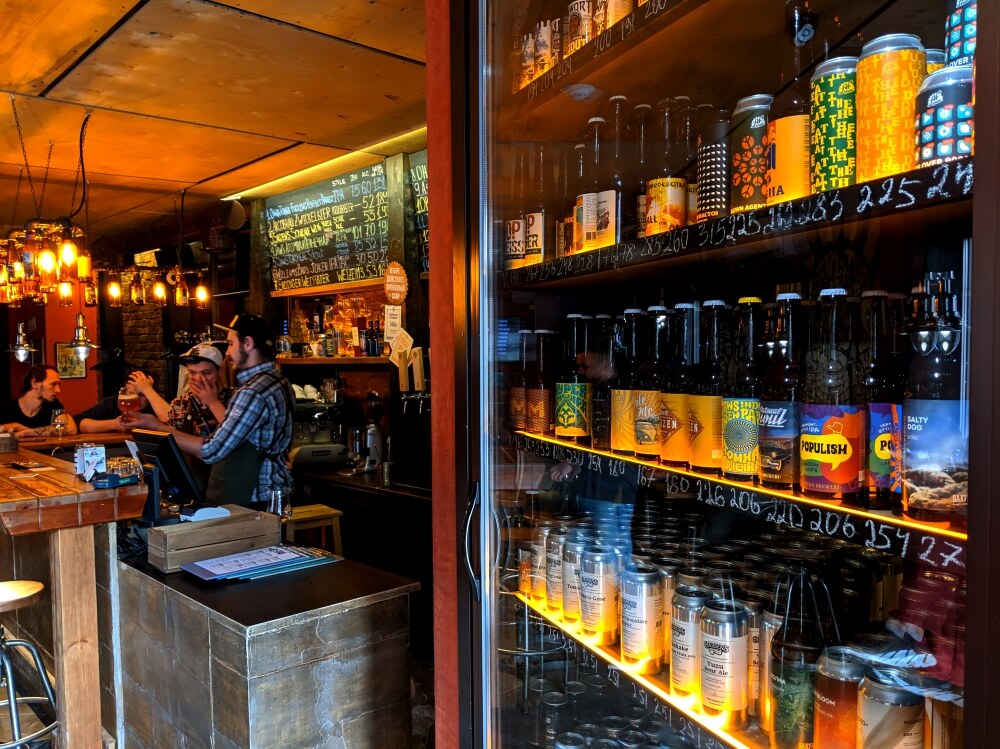
PRO CRAFT
The Memorial museum
According to Lonely Planet, another of Tomsk’s highlights is the Memorial NKVD museum – although evidently only with the English language guide (who was on holiday during my visit). If an English tour isn’t available, my advice would be not to bother; there is only around 10 lines of English in the whole place and the Russian was far too heavy-going for a casual speaker like me. In all honesty, it was a real shame as the breadth of exhibits housed there was impressive.
Tomsk: worth the effort
Finally, we come to the all-important question: is Tomsk worth visting? The answer (if you hadn’t already guessed) is yes.
The things that make Tomsk special can’t be underestimated.
It’s true that much of what makes Tomsk special (Siberian lace architecture, wooden buildings, student population) can also be found in cities like Novosibirsk or Irkutsk. It’s also true that Tomsk lacks any real blockbusters in terms of landmarks or tourist sites. But I really enjoyed my time here and the scale of those things that make Tomsk special can’t be underestimated (I took approximately 1,000 photos on ul. Tartarskaya alone).
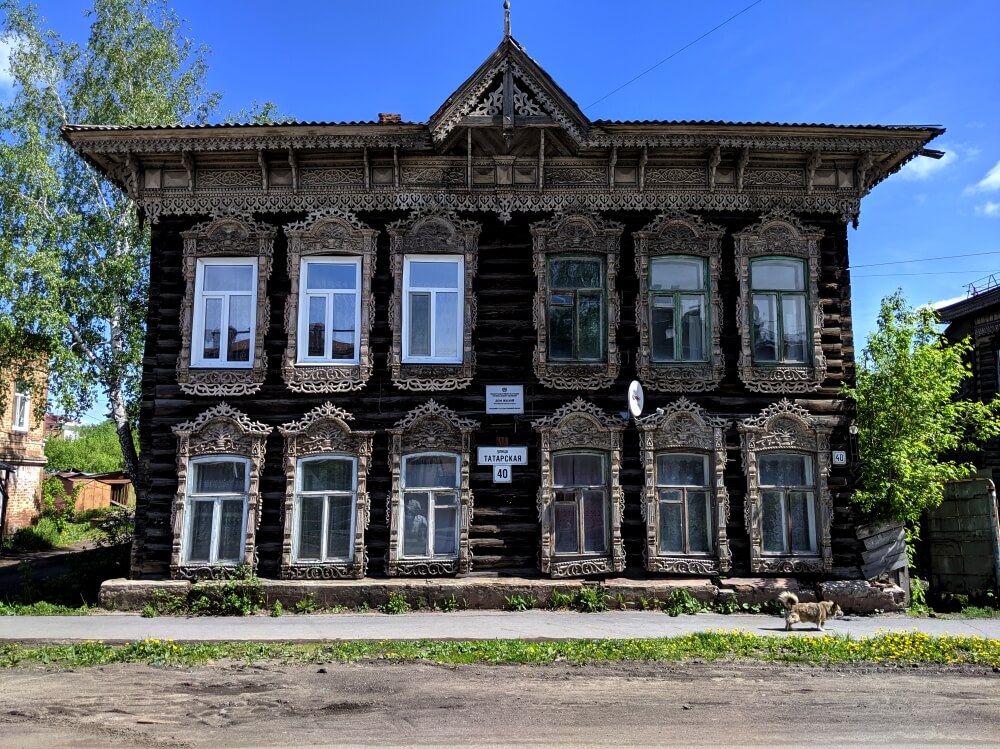
I also think Tomsk offers an alternative glimpse of life in Siberia, compared to brash and polished Krasnoyarsk, for example, or tourist-friendly Irkutsk.
My advice would be to definitely add Tomsk to your Trans-Siberian itinerary. I had around 30 hours in the city, which was perfect. I wouldn’t stay for much longer than 48 hours.
Alternatives to Tomsk
(As I did so much back and forth on this, I thought it made sense to add some of the reasoning behind my decision, in case it helps any other Trans-Siberian planners.)
Ultimately for me, I had four options when choosing a stop in Western Siberia:
- Brief stops in both Tyumen and Tobolsk
- Not stopping at all and travelling straight through
- A day and a half in Novosibirsk
- Tomsk
In the end, the stars aligned and my direct connections to Tomsk (via the aptly-named Tomich train) panned out, making Tomsk the clear winner and the option requiring the least hassle. But here are the downsides to the other options:
- Tyumen & Tobolsk: I dismissed this option fairly quickly as I heard too many things about Tyumen being very shiny but quite dull for tourists, while Tobolsk’s draw-card seemed to be a snow-white Kremlin (of which I’ve seen plenty on the Golden Ring)
- Not stopping: although Eastern Siberia appealed to me far more than Western Siberia (which generally has a reputation for being fairly flat and industrialised), I didn’t want to skip it entirely.
- Novosibirsk: this was the most likely plan B, but in the end, I was worried that Novosibirsk would feel like ‘just another big city’ after Krasnoyarsk and before Yekaterinburg. It seemed like Tomsk offered something a bit different. (Plus S7 airlines offers a direct route from Dusseldorf to Novosibirsk, so I should be able to get back fairly easily in the future!)
More on the Trans-Siberian:
Heading East:
Krasnoyarsk:
6 reasons to visit Krasnoyarsk
Hiking in Stolby Nature Reserve
Lake Baikal:
Hiking the Great Baikal Trail
Lake Baikal in the off-season: visiting Listvyanka in May
Heading West:
Yekaterinburg:
36 hours in Yekaterinburg


I want that turquoise house for myself. If you come to Moscow again, you should go to Suzdal for a day trip – so much great Russian country architecture!
Isn’t it a beautiful building? Would love to see what it’s like inside!
I’d love to go to Suzdal. Is it easy to get to?